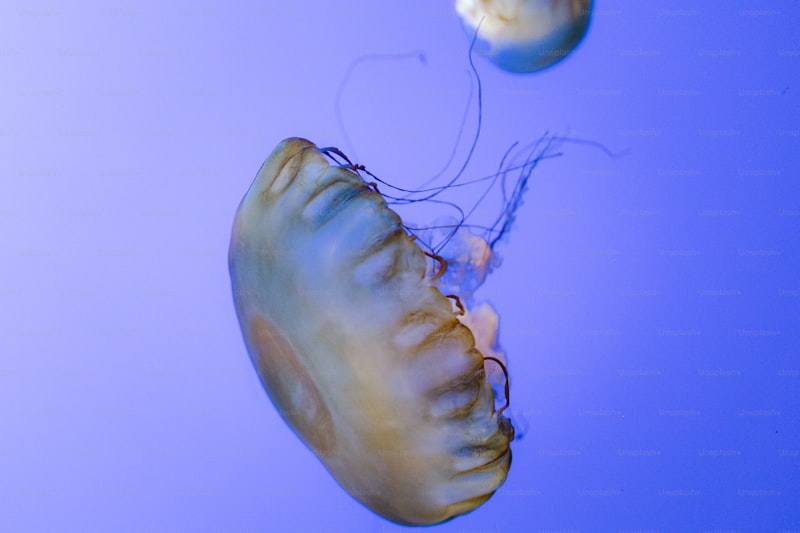One prominent organization, Ocean Conservancy, stands out for its impactful initiatives. Through advocacy and community engagement, Ocean Conservancy tackles issues like plastic pollution, organizing large-scale beach cleanups and advocating for policy changes to reduce plastic waste entering our oceans. Their efforts not only raise awareness but also inspire global action towards cleaner seas.
Another leading entity, Oceana, focuses on policy advocacy to restore and protect marine biodiversity. By working closely with governments and stakeholders, Oceana campaigns for sustainable fishing practices and the establishment of marine protected areas. Their approach aims to rebuild fish populations and promote ecosystem resilience in threatened ocean regions.
The Coral Restoration Foundation™ (CRF) is dedicated to the preservation of coral reefs, essential habitats for diverse marine life. CRF actively restores coral reefs through innovative techniques like coral farming and outplanting, ensuring these fragile ecosystems can thrive amidst challenges like coral bleaching and ocean acidification.

These organizations demonstrate how collective efforts can drive meaningful change in marine conservation. By engaging the public, collaborating with stakeholders, and leveraging scientific research, they advocate for policies that protect oceans and empower communities worldwide. Through their tireless work, marine conservation organizations continue to make a profound difference in preserving our planet’s most vital ecosystems.
Turning the Tide: How Marine Conservation Organizations Are Saving Coral Reefs
Imagine coral reefs as bustling underwater cities, teeming with life and color. However, these vibrant ecosystems are under siege from climate change, pollution, overfishing, and destructive fishing practices. The urgency to protect them has never been greater.
One of the primary focuses of marine conservation organizations is raising awareness about the plight of coral reefs. Through education and outreach programs, they engage communities, governments, and businesses to take action. By highlighting the interconnectedness of coral reefs with global climate stability and biodiversity, they underscore the need for collective responsibility.
In addition to advocacy, these organizations are actively involved in conservation efforts on the ground and in the water. They collaborate with local communities to establish marine protected areas (MPAs) where fishing and other harmful activities are regulated. These MPAs act as sanctuaries, allowing coral reefs to regenerate and thrive.
Scientific research is another cornerstone of their work. Marine biologists and conservationists study coral reefs to understand their resilience mechanisms and vulnerabilities. This knowledge informs conservation strategies and helps in developing innovative solutions to protect these vital ecosystems.
Furthermore, marine conservation organizations leverage partnerships with governments, businesses, and international agencies to enact policies that support coral reef conservation. By influencing policy decisions and advocating for sustainable practices, they strive to create a conducive environment for coral reefs to recover.
The efforts of marine conservation organizations are instrumental in safeguarding coral reefs for future generations. Through a combination of advocacy, scientific research, community engagement, and policy influence, they are leading the charge in reversing the decline of these underwater wonders. Together, we can ensure that coral reefs continue to thrive as vibrant havens of marine biodiversity and natural beauty.
From Trash to Treasure: Innovations by Marine Conservation Groups
Have you ever wondered how marine conservation groups are turning trash into treasure? Imagine this: plastic bottles transformed into sturdy prosthetic limbs for injured sea turtles, or discarded fishing nets woven into colorful beach bags that fund ocean clean-up efforts. These innovative solutions aren’t just a dream—they’re becoming a reality thanks to the creative minds behind various marine conservation groups.

Take, for instance, the Ocean Cleanup project, which gained fame for its ambitious goal of removing plastic waste from the Great Pacific Garbage Patch. Not only are they actively cleaning up the ocean, but they’re also working on recycling the collected plastic into reusable materials, such as sustainable sunglasses and eco-friendly packaging.
Another inspiring initiative comes from the Plastic Bank, which encourages coastal communities to collect ocean-bound plastic waste in exchange for essential goods and services. This not only helps in cleaning up beaches but also provides economic opportunities for local residents. The collected plastic is then recycled into products like building materials and 3D-printed prosthetics, benefiting both the environment and society.
These examples highlight how innovative thinking can transform environmental challenges into opportunities for positive change. By viewing marine debris as a resource rather than waste, these groups are not only cleaning up our oceans but also creating sustainable solutions that address both environmental and social issues.
Next time you sip from a reusable water bottle or carry a stylish bag made from recycled materials, think about the journey it took to transform marine trash into something valuable. Each innovation by marine conservation groups brings us closer to a cleaner, healthier ocean for future generations.
Guardians of the Sea: Stories of Success from Leading Marine Conservation NGOs
One such tale unfolds with the Coral Reef Alliance (CORAL), a pioneering force in reef conservation. Armed with scientific expertise and community engagement, CORAL has revitalized decaying coral ecosystems worldwide. Their approach blends advocacy with action, empowering local communities to become stewards of their marine heritage.
Further along the coast, Ocean Conservancy champions marine protection through strategic initiatives. From combating ocean plastic pollution to advocating for sustainable fisheries, their impact resonates globally. Each campaign, each beach cleanup, is a testament to their vision: a thriving ocean, abundant with life.
Meanwhile, the Sea Turtle Conservancy (STC) safeguards ancient mariners of the sea. Through research and advocacy, they protect nesting habitats and advocate for stronger conservation policies. STC’s efforts extend across borders, nurturing international collaboration for the long-term survival of sea turtles.
In the Southern Ocean, the Antarctic and Southern Ocean Coalition (ASOC) stands vigilant against threats to polar ecosystems. ASOC’s advocacy has shaped international policies, safeguarding marine biodiversity in one of Earth’s last wildernesses. Their work underscores the interconnectedness of global conservation efforts.
Closer to home, Surfrider Foundation protects coastal waters through grassroots activism. With chapters dotting coastlines worldwide, Surfrider mobilizes communities to defend beaches and advocate for clean water. Their campaigns epitomize the power of collective action in safeguarding coastal ecosystems.
The Blue Revolution: Impactful Initiatives by Marine Conservation Leaders
One such initiative gaining traction is the establishment of marine protected areas (MPAs). These zones serve as sanctuaries for marine species, shielding them from harmful human activities like overfishing and pollution. By preserving these habitats, conservationists ensure that delicate ecosystems thrive, benefiting both marine life and coastal communities that depend on them.
Another pivotal aspect of the Blue Revolution is the push for sustainable fishing practices. Leaders in marine conservation emphasize the importance of responsible fishing techniques that minimize bycatch and avoid the depletion of fish stocks. This approach not only preserves biodiversity but also supports the livelihoods of millions who rely on fishing for sustenance.
Technological innovation plays a crucial role in these initiatives as well. From advanced satellite tracking of marine animals to the development of biodegradable materials for ocean cleanup, conservation leaders are harnessing technology to monitor, protect, and restore our oceans on an unprecedented scale.
Education and awareness form the bedrock of the Blue Revolution. Leaders tirelessly advocate for ocean literacy, fostering a deeper understanding of marine ecosystems and the urgent need for conservation among communities worldwide. By empowering individuals with knowledge, these initiatives cultivate a global movement towards sustainable stewardship of our precious marine resources.
As we navigate the challenges posed by climate change and environmental degradation, the efforts of marine conservation leaders stand as beacons of hope. Their dedication, coupled with innovative approaches and widespread advocacy, represents a collective commitment to ensuring that our oceans remain vibrant and resilient for generations to come.
Frequently Asked Questions
Which are the top marine conservation organizations globally?
Discover the leading global organizations dedicated to marine conservation efforts. Learn about their impactful initiatives and contributions to safeguarding marine ecosystems worldwide.
What are marine conservation organizations and what do they do?
Marine conservation organizations work to protect and preserve ocean ecosystems and species. They engage in activities such as research, advocacy for marine policies, habitat restoration, and community education to promote sustainable practices.
How do marine conservation organizations help protect oceans and marine life?
Learn how marine conservation organizations play a crucial role in safeguarding oceans and marine life through initiatives like habitat restoration, sustainable fishing practices promotion, and policy advocacy.
How can I get involved with marine conservation organizations?
Learn how to get involved with marine conservation organizations by researching local and global groups, volunteering for hands-on activities like beach cleanups or educational programs, attending events and workshops, and supporting initiatives through donations or advocacy efforts.
What impact do marine conservation organizations have on local communities?
Discover how marine conservation organizations positively impact local communities through initiatives like sustainable fishing practices, eco-tourism promotion, and educational programs. These efforts not only protect marine biodiversity but also support livelihoods, enhance coastal resilience, and foster community engagement in environmental stewardship.


